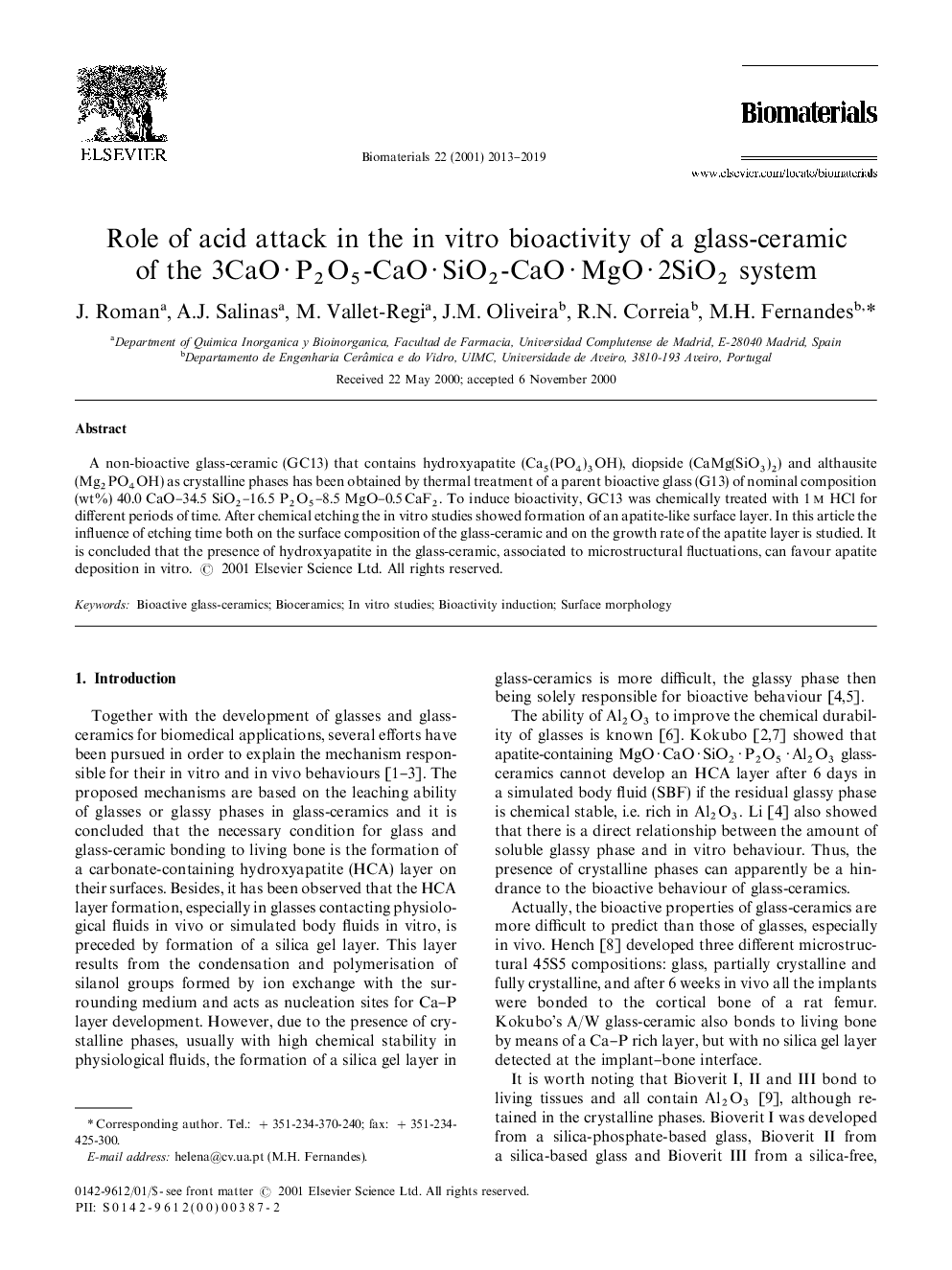| Article ID | Journal | Published Year | Pages | File Type |
|---|---|---|---|---|
| 13820 | Biomaterials | 2013 | 7 Pages |
A non-bioactive glass-ceramic (GC13) that contains hydroxyapatite (Ca5(PO4)3OH), diopside (CaMg(SiO3)2) and althausite (Mg2PO4OH) as crystalline phases has been obtained by thermal treatment of a parent bioactive glass (G13) of nominal composition (wt%) 40.0 CaO–34.5 SiO2–16.5 P2O5–8.5 MgO–0.5 CaF2. To induce bioactivity, GC13 was chemically treated with 1 m HCl for different periods of time. After chemical etching the in vitro studies showed formation of an apatite-like surface layer. In this article the influence of etching time both on the surface composition of the glass-ceramic and on the growth rate of the apatite layer is studied. It is concluded that the presence of hydroxyapatite in the glass-ceramic, associated to microstructural fluctuations, can favour apatite deposition in vitro.
